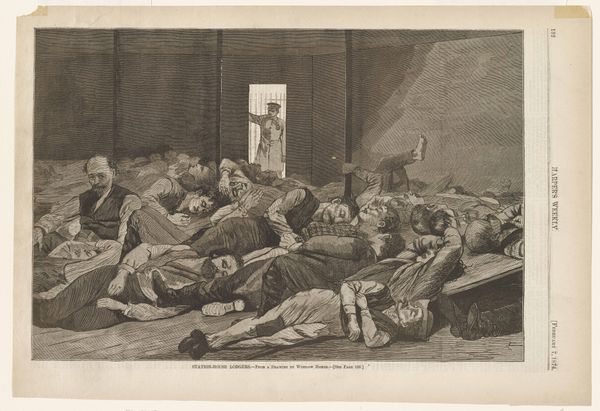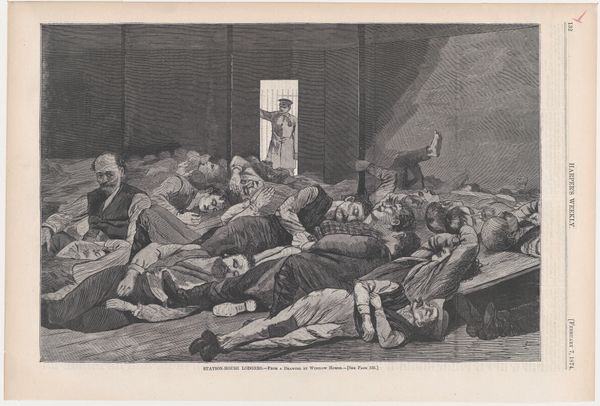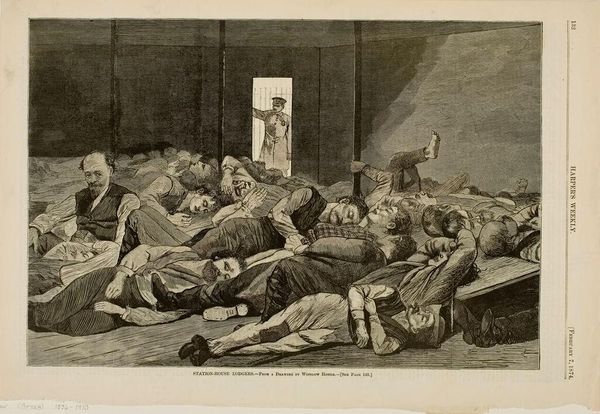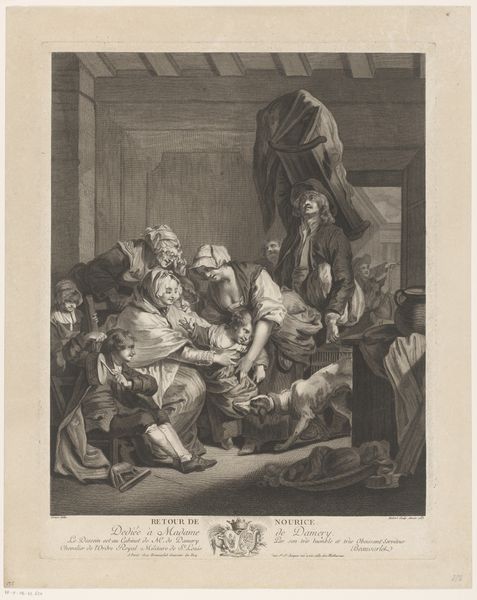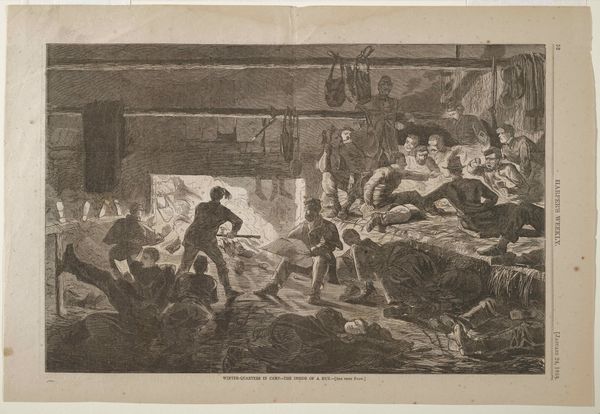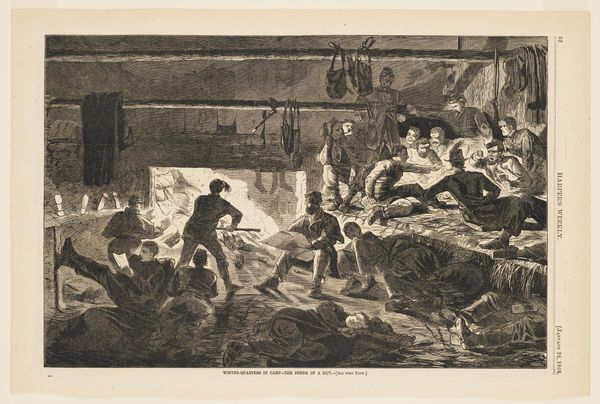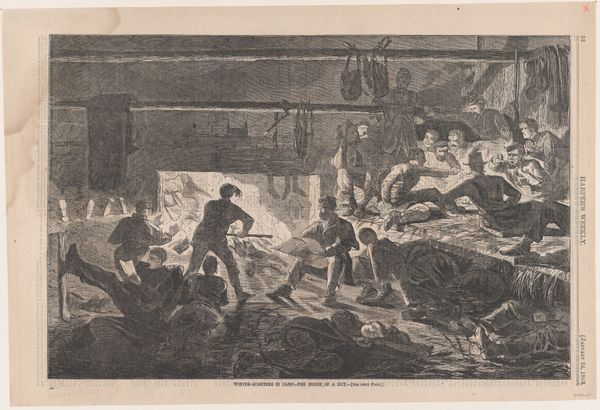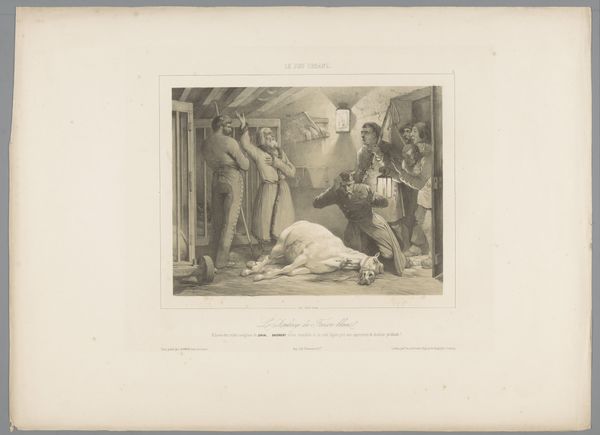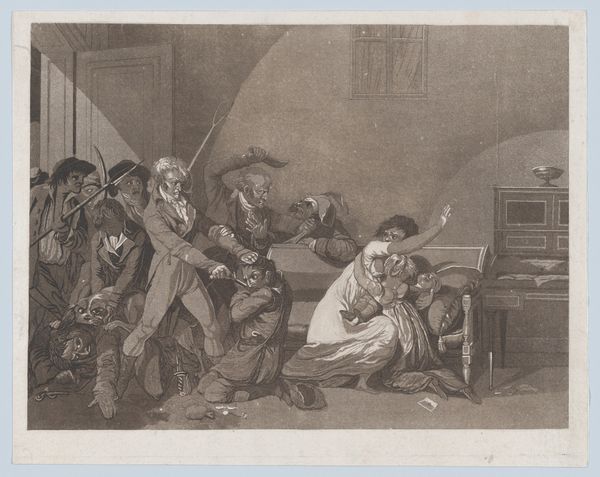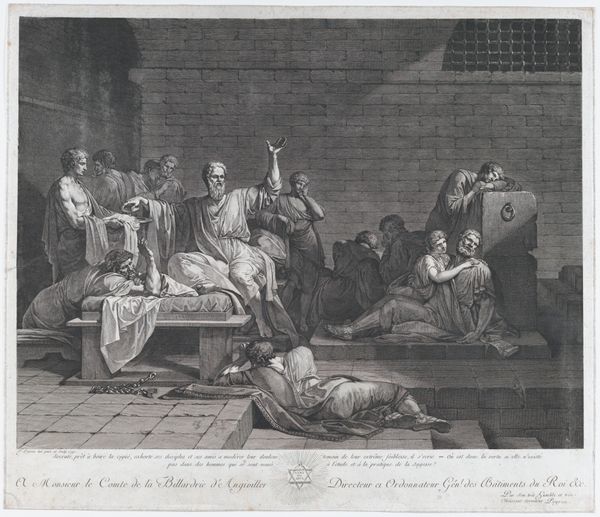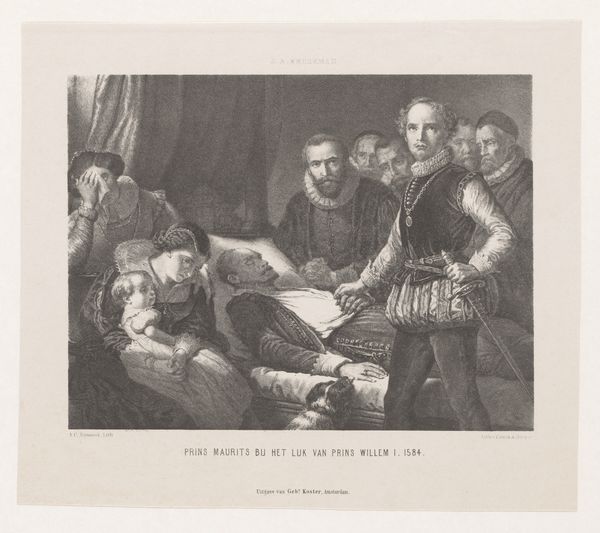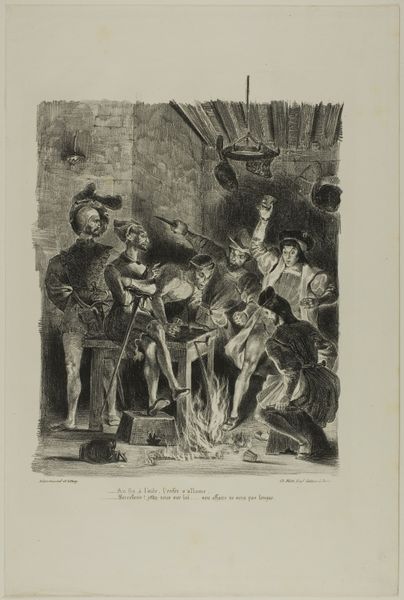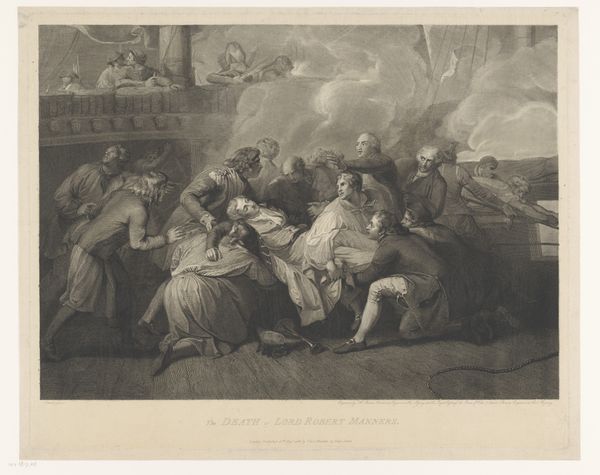
print, woodcut, wood-engraving
#
narrative-art
# print
#
woodcut
#
genre-painting
#
wood-engraving
#
realism
Dimensions: 9 1/16 x 13 1/2 in. (23.02 x 34.29 cm) (image)10 7/8 x 16 in. (27.62 x 40.64 cm) (sheet)
Copyright: Public Domain
Curator: Winslow Homer's 1874 wood engraving, "Station-House Lodgers," presents us with a stark portrayal of social realism. The scene, published in Harper's Weekly, captures the vulnerable state of men seeking refuge in a New York station-house. Editor: Woah, this feels so somber! Look at them, all sprawled out. The stark black and white really amplifies the feeling of exhaustion and... hopelessness, maybe? It's like a freeze-frame of collective vulnerability. Curator: Precisely. Homer, by utilizing the visual language of realism, seeks to shed light on the plight of the marginalized in post-Civil War America. It's worth considering the context of increasing industrialization and its impact on urban populations. The figures appear anonymous, yet they represent a segment of the population often overlooked or actively disregarded. This invites discussion on socio-economic stratification and how we address such matters today. Editor: Absolutely. The single guard figure positioned by the door emphasizes that power dynamic too. Are we safe, or are we incarcerated? It gets you thinking, right? Curator: Indeed. Homer employed the medium of wood engraving strategically to reach a broad audience. Its accessibility through mass publication served a purpose: he wants us to look at them, contemplate them as complex individuals. Also think of it in connection to his earlier images of battle fields. Consider who, post conflict, becomes expendable. Editor: That really makes sense. Art that makes you face uncomfortable truths - that's the stuff that lingers, you know? Like, it would be easy to just scroll past and ignore, but Homer’s use of light and shadow forces your gaze to focus. We become unwilling witnesses. It really pushes those empathic buttons. Curator: Definitely. There’s so much depth to the themes. To conclude, Homer's "Station-House Lodgers" serves as a potent commentary on social inequality. It also challenges us to look beyond the immediate image and interrogate our relationship with precarity and resilience. Editor: Yes, and it's a good reminder that even these stark, black-and-white moments are part of a much bigger, colorful, messed-up human story, and worth remembering.
Comments
No comments
Be the first to comment and join the conversation on the ultimate creative platform.
